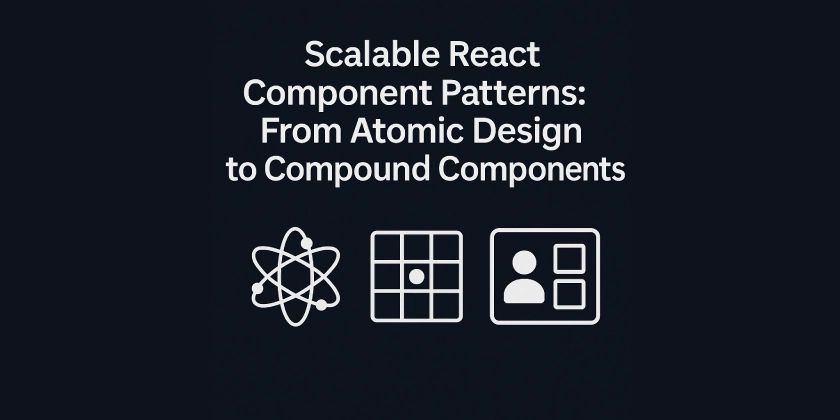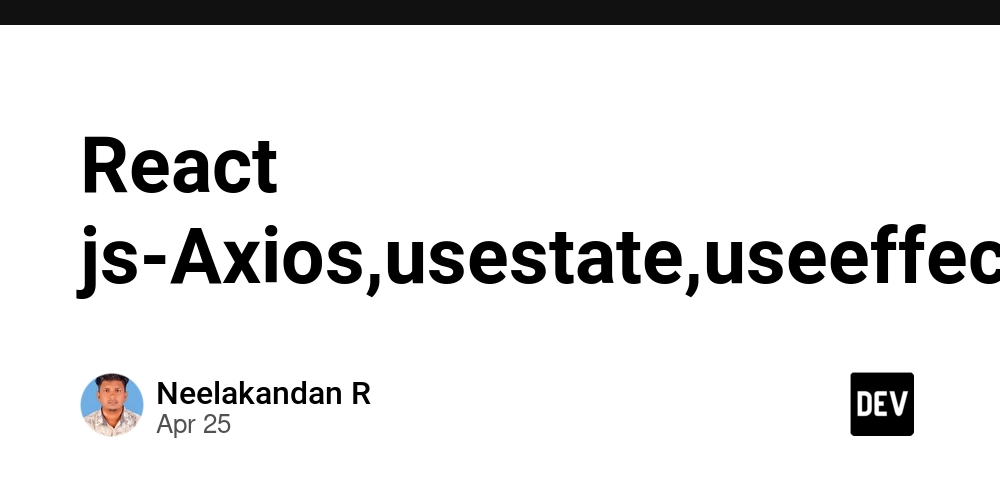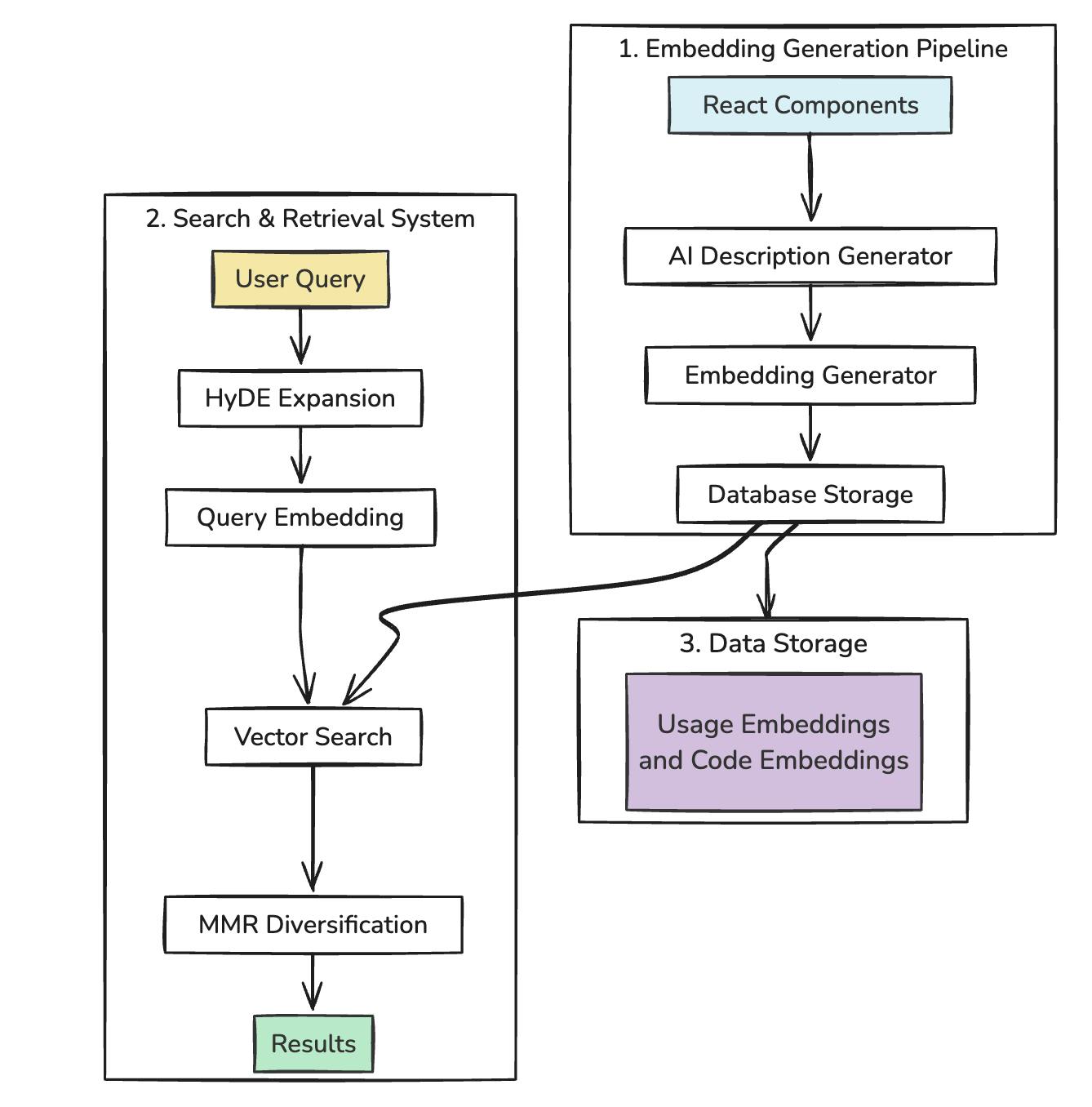React
Logrocket
73

Image Credit: Logrocket
useActionState in React: A practical guide with examples
- The useActionState in React is a Hook that simplifies handling user actions like form submissions and async state changes.
- It replaces the need for managing complex form states with useState, useEffect, and extra logic.
- With useActionState, you can tie user actions to state updates, such as form submissions, in a cleaner and more predictable manner.
- The basic usage involves passing in a function that runs on user action and an initial state to set the starting point.
- The Hook returns the current state, a form action to connect to the
- Benefits of useActionState include reduced boilerplate, simplified async updates, and improved performance by avoiding unnecessary re-renders.
- Practical examples demonstrate its usage in scenarios like a counter app, form submissions with async operations, and like button components.
- For form submissions, useActionState simplifies the state management into a single Hook, enhancing readability and reducing boilerplate.
- In the context of handling multiple actions in a component, useActionState keeps the logic clean and isolated for each action.
- Overall, useActionState streamlines UI logic, especially with async flows, and combines state updates with Server Actions for a more maintainable codebase.
- Give useActionState a try if you find yourself writing too much code for state transitions or loading indicators, as it can make your codebase cleaner and more enjoyable to work with.
Read Full Article
4 Likes
Dev
426

Image Credit: Dev
How to Create a VTuber Studio with Three.js, React & VRM
- To create a VTuber studio on the web, one can use tools like Three.js, React, and VRM models.
- VRM (Virtual Reality Model) is a 3D avatar format commonly used by VTubers and in games, with standardized structure and easy integration.
- For creating a custom avatar, VRoid Studio is a free tool for designing and exporting avatars in the .vrm format.
- To bring the avatar into a web environment, Three.js and the VRM Loader with @pixiv/three-vrm library can be used, along with real-time face and body tracking using Google's Mediapipe and Kalidokit.
Read Full Article
25 Likes
Dev
270

Image Credit: Dev
Scalable React Component Patterns: From Atomic Design to Compound Components
- Promote reusability, reduce prop drilling, create highly customizable UIs, and avoid tech debt by implementing advanced React component patterns.
- Atomic Design breaks the UI into atoms, molecules, organisms, templates, and pages, enabling consistency, design system reuse, and scalability.
- Compound components share implicit state using React context, allowing multiple components to work together seamlessly.
- Other patterns include controlled and uncontrolled components, render props for component logic sharing, headless components for logic without markup, and presentational and container components for separating logic from UI.
- Context, portals, custom hooks, refs, and imperative handles are also important tools in React component patterns.
- Understanding and implementing these patterns leads to cleaner, reusable, and consistent UI systems, better collaboration, and more maintainable code.
Read Full Article
16 Likes
Dev
261

Image Credit: Dev
React js-Axios,usestate,useeffect
- Axios is a promise-based HTTP client for JavaScript that simplifies making HTTP requests from both the browser and Node.js environments.
- Key features of Axios include a promise-based API, support for all modern browsers, automatic JSON data transformation, request and response interceptors, timeout and request cancellation handling.
- To use Axios in a React application, you need to install it and import it into your component. Axios can be used to make various HTTP requests like GET, POST, PUT, DELETE, etc.
- useState is a React hook that allows functional components to manage state. It provides a way to initialize and update state values in a more concise and efficient manner.
Read Full Article
15 Likes
Discover more
Medium
423

Image Credit: Medium
Deploy React App with Full CI/CD Pipeline on AWS | GitHub + CodePipeline + S3
- Build a fully automated CI/CD pipeline using AWS CodePipeline, CodeBuild, and Amazon S3 to deploy a React.js application hosted on GitHub.
- App automatically builds and deploys to a static website on S3 whenever a push is made to the repository.
- Cloning a React app from GitHub, creating an S3 bucket, setting up CodeBuild to build the app, and creating the CodePipeline.
- Tutorial available on Julien Muke's YouTube channel for detailed steps and visual learning.
Read Full Article
25 Likes
Hackernoon
307

Image Credit: Hackernoon
React’s New Server Components Might Be the Death of Bloated Web Apps
- React introduced React Server Components (RSC) to address the limitations of Client-Side Rendering (CSR), Server-Side Rendering (SSR), and Static Site Generation (SSG).
- RSC allows components to execute on the server, removing the need to send unnecessary JavaScript to the browser and simplifying data fetching logic.
- RSC coexists with SSR and SSG, offering finer-grained control over performance, bundle size, and rendering behavior.
- Next.js 15 introduced RSC as a core feature, allowing components to access server-side data directly and eliminating the need for client-side hydration for static content.
- RSC doesn't support traditional React hooks like useState and useEffect in server components, enforcing a clear separation of responsibilities.
- Developers can combine RSC with SSR and SSG at the component level in Next.js 15, choosing the most appropriate rendering strategy for each part of the UI.
- Best practices include starting with server components, keeping boundaries clear, using Suspense for progressive delivery, and co-locating logic with components.
- Looking ahead, RSC represents a foundational shift in how React applications are built, allowing for a server-first approach and redefining frontend architecture.
- The broader frontend ecosystem is shifting towards server-first rendering, with frameworks like Remix, Astro, and Qwik emphasizing server data loading and minimal client-side JavaScript.
- As React 19 and the ecosystem evolve, more granular debugging tools, better DevTools integration, and higher-order patterns for rendering strategies are expected.
- React Server Components are seen as a React-native solution to scaling interactivity and performance by sending less JavaScript and adopting a purpose-first approach.
Read Full Article
18 Likes
Medium
174

Image Credit: Medium
Why Choose Next.js Over Create React App
- Next.js offers several advantages over Create React App for building React apps.
- Next.js simplifies routing by allowing the creation of new files inside the 'pages' folder.
- Next.js enables server-side rendering, allowing content to be shown before the page loads.
- Next.js eliminates the need for a separate backend server, as it allows the creation of API endpoints within the same project.
Read Full Article
10 Likes
Logrocket
188

Image Credit: Logrocket
React Hook Form vs. React 19: Should you still use RHF in 2025?
- React Hook Form is a performant form validation library in React that uses uncontrolled inputs instead of state to control inputs, reducing re-renders.
- It is minimal, lightweight (8.6 kB minified and gzipped), has zero dependencies, and follows HTML standards for validation.
- React 19 introduces built-in form handling, but the question arises whether to still use React Hook Form in 2025.
- React 19 uses a new approach with form Actions, asynchronous functions handling form submissions directly, and leverages browser's built-in form behavior.
- React 19 simplifies form handling with a focus on web fundamentals, eliminating the need for manual state tracking and resetting forms.
- React 19 uses the FormData API to access form values, without the need to track input state in React.
- React Hook Form offers flexibility, complex validation support with libraries like Yup, and is beneficial for large-scale forms, dynamic fields, and complex validation rules.
- React Hook Form provides integration with UI component libraries, making it easier to create forms with various components and validation rules.
- Using React Hook Form in scenarios where high performance, flexibility, and complex validation are required is recommended over React 19's native form handling.
- React Hook Form maintains its relevance in 2025 for projects needing advanced form handling capabilities beyond what React 19 offers.
Read Full Article
11 Likes
Hackernoon
252

Image Credit: Hackernoon
Can Hippos Exoskeleton's Smart Knee Brace React in Time to Prevent ACL Injuries?
- Hippos Exoskeleton Limited has developed the Smart Adaptive Knee Brace to prevent ACL injuries.
- The knee brace combines a sensor fusion system and an inflatable airbag to detect and prevent knee injuries before they occur.
- The system measures tibial rotation angle and inflates the airbag to restrict further motion when a dangerous rotation is detected.
- Initial testing on an artificial knee joint showed promising results, with the brace countering twisting motion in just 20ms.
Read Full Article
15 Likes
Dev
225

Image Credit: Dev
🧩 React Form Management & Schema Validation: A Beginner-Friendly Overview
- Form management libraries like React Hook Form, Formik, React Final Form, Unform, Informed, and TanStack Form can simplify state handling, validation, and submission flow in React forms.
- Schema validation libraries like Zod, Yup, Joi, Superstruct, and AJV provide declarative and consistent validation rules for enforcing data integrity in forms.
- To supercharge form management libraries with schema validation, you can combine them by using a resolver, such as the zodResolver in React Hook Form, to integrate the validation rules defined in schema libraries like Zod or Yup.
- By combining form management libraries with schema validation, you can achieve cleaner, more scalable, and type-safe code in React forms.
Read Full Article
13 Likes
IGN
381

Image Credit: IGN
The Elder Scrolls 4: Oblivion Remastered Fans React to All the Biggest Changes, Say It's Good Enough to Be Called a Remake
- The Elder Scrolls 4: Oblivion Remastered by Bethesda and Virtuos features numerous improvements and changes that give the classic RPG a fresh update.
- Visual upgrades include rebuilt models and environments, realistic lighting, and improved lip-syncing technology.
- Fans have reacted positively, with many feeling the remaster is more like a remake and applauding the enhancements.
- Gameplay tweaks such as a cleaner lock-picking system and the ability to sprint have been implemented.
- The level-up system now bridges elements from both Oblivion and Skyrim, catering to a modern audience.
- Despite significant changes, Bethesda aimed to maintain the original charm and essence of Oblivion in the remaster.
- Players appreciate decisions like retaining old voice actors, updating gameplay, and enhancing the UI while preserving the original look.
- The remaster has received praise for its attention to detail and faithful updates to the beloved classic game.
- Oblivion Remastered is available on PC, PS5, and Xbox Series X and S, offering both new and returning players a revitalized experience.
- Excitement surrounding the remaster has been high among RPG fans, with the new version bringing enhancements and nostalgia to the forefront.
- The remaster is priced at $49.99 and also available on Xbox Game Pass Ultimate, providing a comprehensive experience for fans of the series.
Read Full Article
22 Likes
Dev
0

Image Credit: Dev
How To Use an MCP React Client with Multiple AI Agents
- CopilotKit is a framework for building intelligent companions and in-app infrastructure.
- MCP enables agents to work together and take actions within one interface.
- It simplifies multi-agent coordination, such as sending messages to Slack or triggering APIs.
- Join CopilotKit's Discord to start building something cool.
Read Full Article
Like
Medium
142

Image Credit: Medium
The React Documentation I Wish I Had When I Started: From Basics to Advanced
- React is a JavaScript library for building user interfaces, mostly for web apps.
- Functional components with hooks are recommended over class components.
- JSX is JavaScript syntax sugar that allows embedding variables and expressions.
- You don't need to know everything about React to start building.
Read Full Article
8 Likes
Logrocket
253

Image Credit: Logrocket
How to deploy React apps to GitHub Pages
- GitHub Pages is a free service to host static websites and is a great option for deploying React apps.
- To deploy a Create React App project to GitHub Pages, follow steps like installing gh-pages package, updating package.json, and deploying the app.
- For deploying from scratch, set up the React app, create a GitHub repository, push the app, install/configure gh-pages, and deploy the application.
- Troubleshooting common issues like blank pages, 404 errors, missing assets, and repository configuration problems is covered.
- Custom domains for GitHub Pages like www subdomain, custom subdomain, and apex domain are explained.
- For routing React apps on GitHub Pages, use HashRouter, create routes, and set up navigation components.
- Setting up a preview environment using Livecycle and automating deployments with GitHub Actions are also discussed.
- Using environment variables and secrets with GitHub Actions for added security is detailed in the article.
- GitHub Pages is recommended for its simplicity, cost-effectiveness, and integration with existing workflows, making it suitable for open-source projects and portfolios.
- These steps provide a comprehensive guide to deploying React apps to GitHub Pages for developers of all levels.
Read Full Article
15 Likes
Hackernoon
294

Image Credit: Hackernoon
How We Built a Semantic Search Engine for React Components Using AI
- 21st.dev built a semantic search engine for React components to tackle challenges in finding UI building blocks based on semantic understanding rather than keyword matching.
- Traditional search systems for UI components face limitations due to the intent vs. implementation gap, vocabulary mismatch, lexical-semantic dissonance, and representational sparsity.
- The unique challenge in component retrieval lies in searching for semantically relevant components despite potential lexical mismatch.
- The approach combines dual-vector embeddings, AI-generated descriptions, Hypothetical Document Enhancements (HyDE), and Maximal Marginal Relevance (MMR) for result diversity.
- The technical architecture involves embedding generation, search & retrieval systems, and data storage model for efficient querying of UI components.
- Embedding generation includes usage and code embeddings, enhancing semantic context through AI-generated descriptions analyzed by Claude.
- The search engine incorporates HyDE, vector similarity search, and MMR to translate vague user queries into contextual searches for semantically relevant components.
- The API layer integrates the search system, handling validation, execution, result enhancement, and usage tracking for a comprehensive pipeline.
- Challenges included code vs. ASTs, prompt engineering for AI-generated descriptions, and fine-tuning the embedding strategy for usage and code understanding.
- Future directions include exploring AST-based embeddings and fine-tuned models for UI component understanding.
Read Full Article
17 Likes
For uninterrupted reading, download the app